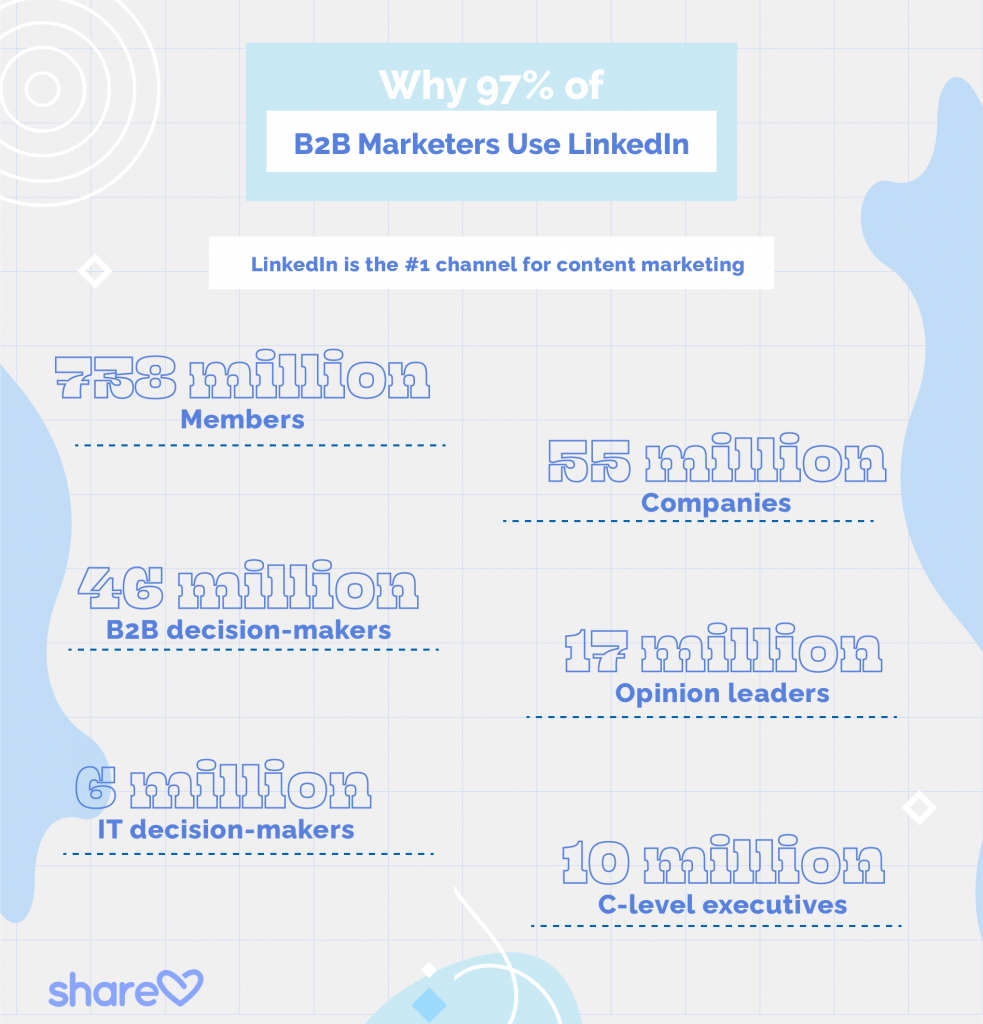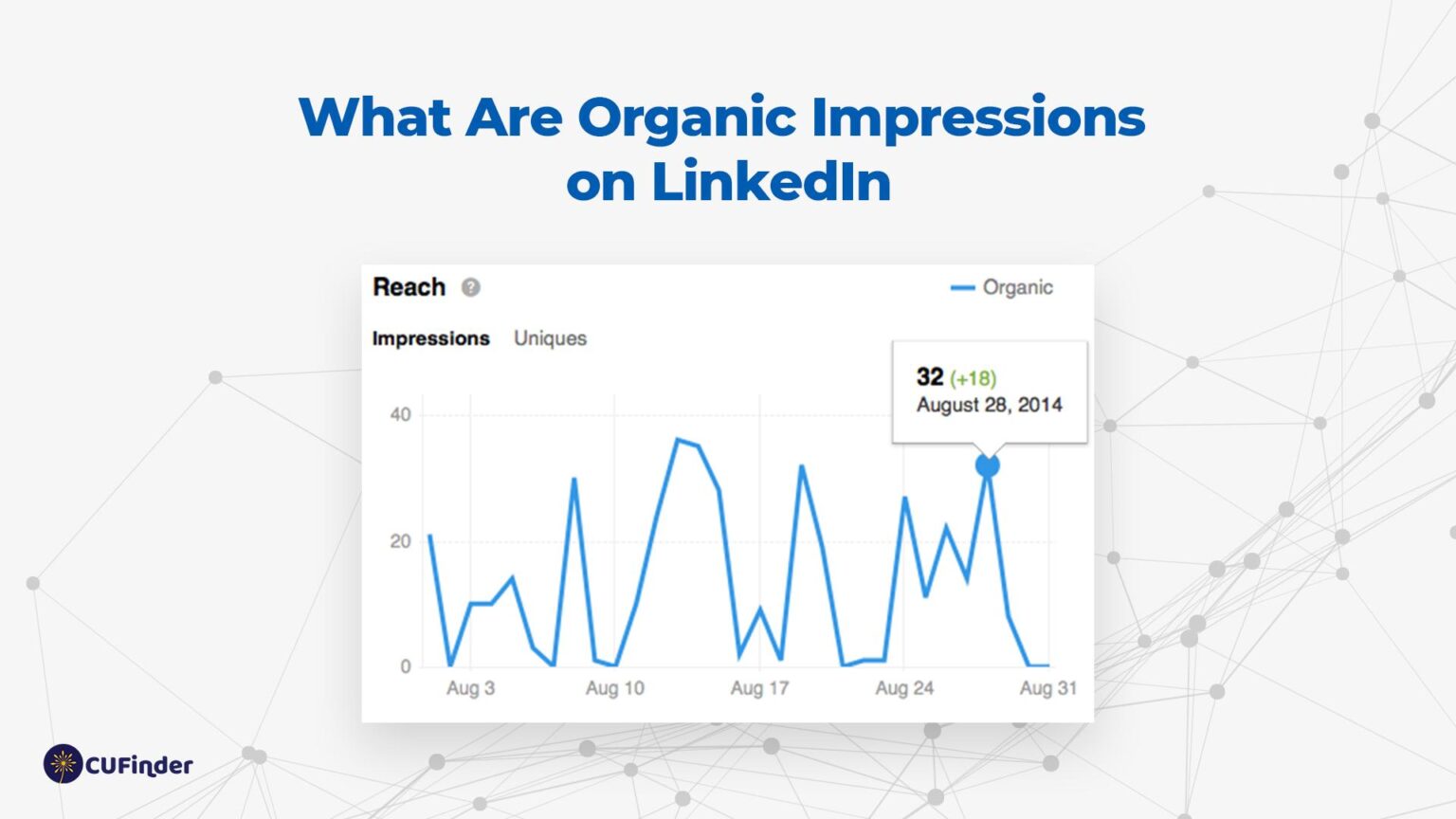In the world of social media and professional networking, understanding metrics is crucial, especially on platforms like LinkedIn. LinkedIn impressions play a pivotal role in gauging the visibility and engagement of your content. So, what exactly do we mean when we talk about impressions? In this post, we’ll delve into the brain of
What Are LinkedIn Impressions?

LinkedIn impressions refer to the number of times your content—like posts, articles, or ads—has been displayed on the LinkedIn platform. It doesn't matter if someone engages with that content or not; as long as it appears on a user's screen, it counts as an impression. Here’s a little more to chew on:
- Visibility Indicator: Impressions provide insight into how visible your content is to your audience. More impressions can indicate that your content is being served to a larger audience.
- Content Performance: Higher impressions can suggest that your posts are resonating well or being shared, leading to potential engagement increases.
- Ad Effectiveness: For marketers, understanding impressions is crucial in assessing how well a campaign is performing since impressions directly relate to your advertising costs.
It’s essential to differentiate between impressions and other metrics such as clicks and engagements. Impressions focus solely on visibility, while clicks measure actual interaction with your content. This distinction is key when evaluating your overall content strategy. So, whether you're a recruiter, marketer, or job seeker, grasping the concept of LinkedIn impressions is fundamental for maximizing your presence and effectiveness on the network.
The Importance of Impressions in LinkedIn Analytics

Understanding impressions is crucial when navigating the world of LinkedIn analytics. Impressions refer to the number of times your content—be it a post, article, or ad—is displayed on a user's screen. But why should you care about these numbers? Well, let’s break it down.
First off, impressions serve as a *key performance metric. They provide insights into the visibility of your content. The more impressions you garner, the higher the likelihood that users are encountering your brand. This can lead to increased engagement, whether that’s likes, comments, shares, or even clicks to your profile or website.
Additionally, impressions are important for tracking the effectiveness of your marketing strategies. For instance, if you notice a spike in impressions after making certain changes to your content strategy, you can conclude those adjustments are working. On the flip side, low impressions might indicate it's time to rethink your approach.
Another significant reason impressions matter is their role in building brand awareness. Each impression is a chance for your brand to be recognized. Awareness is often the first step toward deeper engagement or even conversion. So, when you see a strong impression count, know that you’re making strides in getting your message out there.
Lastly, impressions can help you understand the target audience* you're attracting. By analyzing which posts receive the most impressions, you can fine-tune your messaging to better align with your audience's interests and needs. In summary, impressions are not just numbers—they are insights that can propel your LinkedIn strategy to new heights.
How Impressions Are Calculated on LinkedIn

Now that we understand the importance of impressions, let’s dive into how LinkedIn calculates them. While it might seem like a black box, the process is relatively straightforward.
- Content Display: An impression is recorded each time a piece of content is displayed in a user's feed. This means that if someone scrolls past your post, even if they don’t engage with it, an impression is counted.
- Feed Algorithm: LinkedIn uses a complex algorithm to determine which posts are shown to users. Factors like relevance, engagement history, and timing play a vital role in whether your content gets impression exposure.
- Unique Impressions vs. Total Impressions: It's also worth noting that LinkedIn differentiates between unique impressions (how many users saw your content) and total impressions (the overall count of all views). This distinction can help you better gauge the reach of your posts.
- Paid vs. Organic Content: Impressions are counted for both organic content (unpaid posts) and paid advertisements. However, the strategy for maximizing those impressions will differ between the two.
Overall, understanding how impressions are calculated can give you a clearer picture of how effectively your content is reaching your audience. By leveraging this data, you can create a more targeted approach to boost not just impressions but the overall engagement of your LinkedIn content.
Factors Influencing LinkedIn Impressions
When it comes to understanding LinkedIn impressions, several factors come into play. Impressions refer to how many times your content is viewed, and various elements can impact this number significantly. Let’s dive into some of the most crucial factors:
- Content Quality: High-quality, relevant content is likely to attract more views. Posts that inform, educate, or entertain your audience tend to perform better, generating higher impressions.
- Timing of Posts: The timing of your posts can affect your visibility. Posting during peak hours, when your target audience is most active, can lead to increased impressions.
- Engagement Rate: The engagement your content receives—likes, comments, and shares—can boost visibility on LinkedIn’s algorithm, resulting in more impressions.
- Network Size: Having a larger network generally increases your reach. The more connections you have, the higher the chances your content will be seen, leading to more impressions.
- Use of Hashtags: Relevant hashtags can enhance discoverability, making it easier for users within and outside your network to find your posts.
Understanding these factors can help you strategically craft your LinkedIn strategy to maximize impressions, making your content more visible and engaging.
Interpreting Impression Data for Better Engagement
Interpreting impression data is crucial for enhancing your overall LinkedIn strategy. However, it’s not just about the numbers; it’s about understanding what those numbers signify and how they can inform your future content and engagement strategies. Here are some key insights:
| Data Aspect | Insight |
|---|---|
| High Impressions, Low Engagement | This may indicate that while your content is seen, it doesn’t resonate with your audience. Consider tweaking the content for relevance or appeal. |
| Low Impressions, High Engagement | This suggests that your audience values your content but that it’s not being widely distributed. Exploring broader topics, optimizing post times, or increasing network connections could help. |
| Consistency in Posting | Regular posting can help boost impressions. Analyze which days and times yield the best performance, and stick to a posting schedule. |
Ultimately, interpreting impression data is about digging deeper into your analytics to develop a better understanding of your audience. By analyzing these metrics, you can refine your content strategy and increase engagement, ultimately creating a more impactful presence on LinkedIn.
Best Practices to Increase LinkedIn Impressions
If you’re aiming to boost your LinkedIn impressions, you’re in the right place! Impressions are essentially the number of times your content is displayed to LinkedIn users. The more impressions you get, the wider your reach, and here are some effective strategies to help you enhance those numbers:
- Optimize Your Profile: Start with a professional photo, a compelling headline, and a well-written summary. The first step to gaining impressions is ensuring your profile shines!
- Engage with Your Network: Regularly like, comment, or share posts from your connections. The more you engage, the more visible you become on others’ feeds, leading to increased impressions.
- Post Regularly: Consistency is key! Strive to post updates several times a week. A good rule of thumb is to share content at least 2-3 times per week to keep your audience engaged.
- Use Rich Media: Incorporate images, videos, and infographics in your posts. Visual content is more engaging and tends to generate more impressions than text-only updates.
- Utilize Hashtags Wisely: Use relevant hashtags to increase visibility. Aim for 3-5 well-chosen hashtags to help your content reach interested audiences.
- Post During Peak Hours: Timing matters! Research shows that posts made during weekdays, particularly Tuesdays to Thursdays, tend to receive more impressions.
- Join Relevant Groups: Participate actively in LinkedIn groups in your industry. Sharing valuable content in these groups can dramatically boost your impressions.
By following these best practices, you’ll not only increase your impressions but also foster meaningful connections within the LinkedIn community!
Conclusion: Leveraging Impressions for Success on LinkedIn
In the grand scheme of your LinkedIn strategy, understanding and leveraging impressions can be a game-changer. Impressions are not just numbers; they represent opportunities for connection, engagement, and influence within your industry.
When you recognize the significance of impressions, you unlock insights into what resonates with your audience. Some key takeaways to leverage impressions effectively include:
| Takeaways | Description |
|---|---|
| Measure Regularly: | Keep track of your impressions to identify patterns. This could help you discern the type of content that garners the most attention. |
| Adjust Your Strategy: | Based on analytics, don’t hesitate to tweak your content strategy. If you notice particular topics or formats generate higher impressions, lean into those! |
| Enhance Network Relations: | Use your impressions to gauge engagement and strengthen relationships in your network. Engaging with content from your connections can create a cycle of visibility beneficial for everyone. |
| Keep Learning: | Stay updated with LinkedIn’s features and trends. This knowledge will ensure you’re always adapting and maximizing your impressions. |
In essence, focusing on impressions allows you to refine your LinkedIn presence and engage more meaningfully. By applying what you’ve learned about maximizing impressions, you’re well on your way to achieving greater success on the platform!










